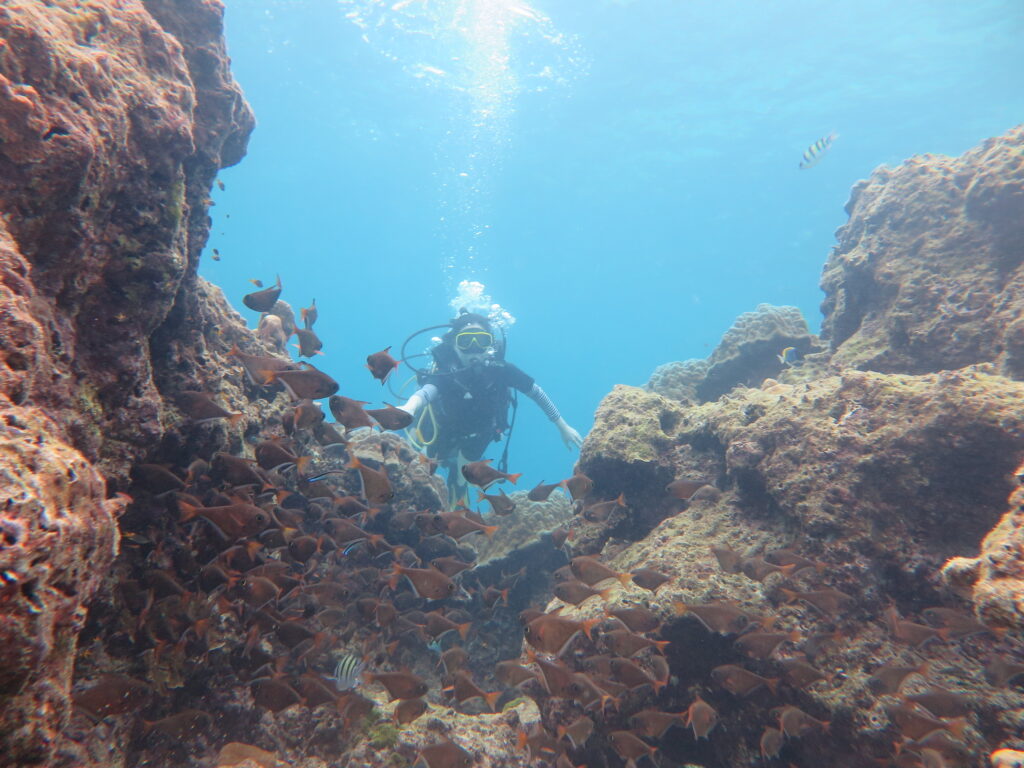What is a Manifold?

A manifold in scuba diving is an essential component that plays a crucial role in connecting multiple tanks to provide divers with a continuous and reliable air supply. This device allows for the seamless integration of two or more tanks, ensuring that divers can manage their air reserves efficiently and safely. Manifolds are particularly important in technical and deep diving, where extended bottom times and redundancy in air supply are critical. By linking tanks together, a manifold provides divers with the flexibility to access a larger volume of air, enhancing their underwater experience and safety.
What is a Diver Propulsion Vehicle?

A Diver Propulsion Vehicle (DPV), also known as an underwater scooter, is a motorized device used by scuba divers to increase their range underwater with minimal physical exertion. By holding onto the DPV, divers can be pulled through the water at various speeds, allowing them to cover greater distances and access dive sites that would otherwise be challenging to reach. DPVs are used in various types of diving, from recreational to technical and even military applications, providing significant benefits in terms of efficiency and safety.
What is Closed Circuit Scuba?

Closed circuit scuba, commonly referred to as rebreather technology, represents a significant advancement in underwater breathing apparatuses. Unlike traditional open circuit scuba systems, which release exhaled gases into the water, closed circuit rebreathers recycle the diver’s exhaled breath. This recycling process involves scrubbing carbon dioxide from the exhaled air and adding the necessary amount of oxygen to make the gas breathable again. Closed circuit systems are renowned for their efficiency in gas usage, allowing divers to stay underwater for extended periods. These systems are particularly favored in scientific research, military operations, and technical diving, where extended bottom times and reduced gas consumption are crucial.
What is a Scuba Diving Reel?

A scuba diving reel is an essential piece of equipment for divers, providing a reliable way to deploy and manage a line underwater. Reels are used to help divers maintain orientation, navigate, and communicate in a variety of underwater environments, from open water to complex cave systems. The versatility and functionality of reels make them a critical component of safe and effective diving practices.
What is a Quick Link?

A quick link, often used in scuba diving, is a small but crucial piece of hardware designed to connect various components of diving gear quickly and securely. Its design resembles a chain link but with a threaded closure, which allows for easy attachment and detachment. Quick links are indispensable in diving due to their strength, reliability, and ease of use, providing divers with a versatile tool for securing equipment such as hoses, accessories, and other essential items. Their simplicity and efficiency make them a preferred choice over other types of connectors.
What is Open Water Diving?

Open water diving is a fundamental form of recreational scuba diving, characterized by diving in natural bodies of water such as oceans, seas, and lakes. Unlike confined water diving, which takes place in controlled environments like swimming pools, open water diving offers divers the opportunity to experience the vastness and diversity of underwater ecosystems. This type of diving typically involves greater depths and more variable conditions, making it both a thrilling and challenging pursuit for enthusiasts of all levels. The concept of open water diving is integral to the sport, providing the foundation for various specialized diving activities and advanced certifications.
What is an Adjustable Buoyancy Life Jacket?

An adjustable buoyancy life jacket (ABLJ) is a crucial piece of equipment in scuba diving, designed to help divers manage their buoyancy underwater. Buoyancy control is vital for a safe and enjoyable diving experience, as it allows divers to maintain neutral buoyancy, ascend, or descend smoothly. The ABLJ combines the functionality of a life jacket with the capability to adjust buoyancy, making it an essential tool for divers of all levels. This article will delve into the history, design, types, operational use, safety features, and overall impact of ABLJs on scuba diving.
What is a Glowstick?

A glowstick is a self-contained, short-term light source that produces light through a chemical reaction known as chemiluminescence. Originally developed for military and emergency use, glowsticks have become essential tools for various recreational activities, particularly in scuba diving. These devices are popular among divers for their ability to provide reliable illumination underwater, where traditional lighting options may be impractical or unsafe. Glowsticks are valued for their simplicity, durability, and the immediate bright light they emit, which can be critical for safety and communication during night dives or in low-visibility conditions.
What is Intermediate Pressure?

Intermediate pressure is a critical concept in scuba diving, referring to the pressure between the first and second stages of a diver’s regulator system. This pressure is crucial for the proper functioning of the diving equipment, ensuring that the diver can breathe comfortably and safely underwater. Understanding intermediate pressure is essential for both recreational and technical divers, as it affects the overall performance and safety of the diving gear. This article delves into the principles, mechanics, equipment implications, maintenance, environmental impacts, and advanced applications of intermediate pressure in scuba diving.
What is Wall Diving?

Wall diving is a mesmerizing and unique form of scuba diving, where enthusiasts descend alongside vertical geological formations, typically in locations where the ocean floor abruptly falls away into deep water. These formations, often cliffs, rock walls, or coral reefs, run vertically, extending from shallow to significant depths. Wall diving offers divers the unique opportunity to explore a dramatically different underwater environment, offering a vast array of marine life and breathtaking views.
